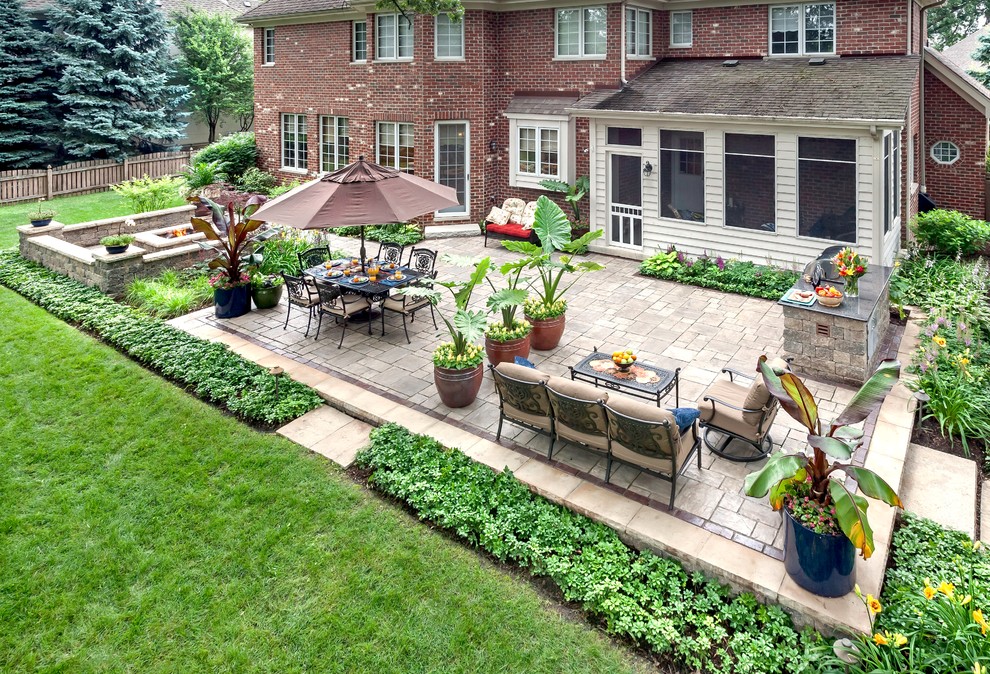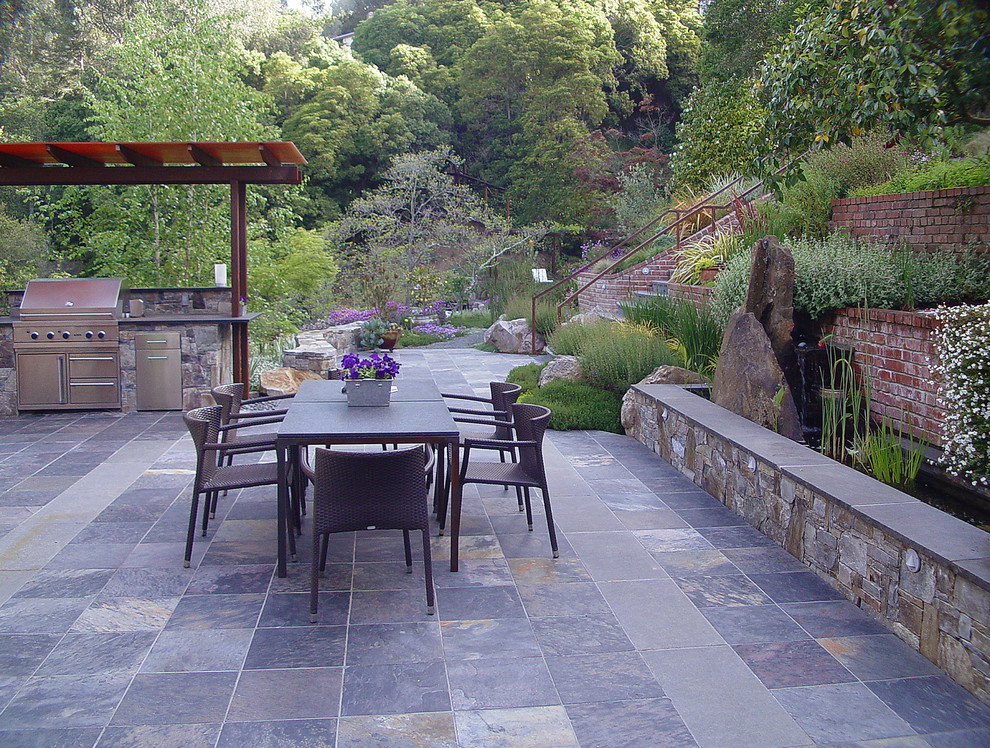How to Match the Landscape of Your Lawn with Your Patio
Decorating any area is all about tying its various elements together in the context of a single theme. Indoors, we know that the floor coverings, wall finishes, window treatments, and furnishings should all make sense together. The same is true outdoors. If all the different elements of your landscape are coordinated, you have a much more beautiful setting. Here are four tips for making this happen.
Match Colors
Just as you do inside the house, match colors in your landscape. This is most easily done by having multiple plantings of the same flowers, shrubs, or trees, but you can also build the landscape around a color family that cuts across several different species.

Photo by K&D Landscape Management
Remember that some colors continue year-round. Evergreens can blend into the background while showy summer flowers are in bloom, but as deciduous plants surrender to the changing weather each fall, your pines, firs, and spruces will become the focal point. Make sure they match as well, and plan for them to match the materials of your patio as well.
Work with Constructed Elements
Your landscape and your home must work together. Just as your patio was designed to match your home, your plants should also match them. An alpine-style home looks better surrounded by evergreens, while a home inspired by antebellum architecture needs hydrangeas and willows around it.

Photo by Cording Landscape Design
Good landscape design should go hand in hand with what you construct with wood and bricks. Custom-built patios can blend beautifully with the lawn when you create a smooth transition using the right plants, border materials, and mulch.
Plan for Functionality
Patios are rarely used just for show. They are, by design, a space for socializing or simply enjoying time outdoors.

Photo by Simmonds & Associates, Inc.
Tall, showy plants are wonderful, but you must make sure they don’t interfere with walking paths on and off of the patio. Potted plants should be placed away from features like fire pits and tables, and you should be sure that all plants are clear of the path for hoses used to water plants.
Keep It Practical
Plants are living things. As such, they introduce some variables to the patio. They drop leaves and flower petals, and those flowers attract pollinators that will probably include bees.

You should plan to keep any plant material dropped by your landscape in areas where it won’t create a constant cleanup problem, and if you have bee allergies in the home, don’t use bee-friendly plants.
A patio is an enjoyable mix of the outdoors and indoors. Keeping this interaction properly balanced is key to making the patio as beautiful and functional as possible.









